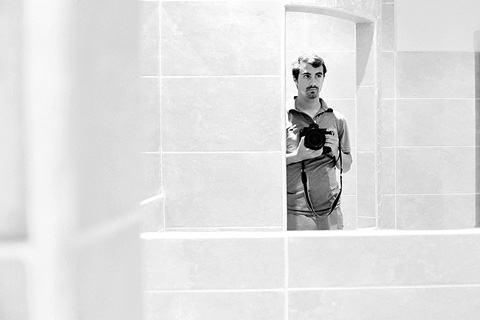
Many thanks to Scott and Brad for inviting me to write a post on this blog – It’s an honor to follow many inspiring photographers as a guest blogger here.
On my own blog, I normally write about the process it took to get a single picture or ramble so much that I sometimes wonder the next day what I was talking about. I hope not to ramble and I’ll try not to leave behind after the first sentence, but can’t promise anything.
There are many things I could talk about, and I had a hard time thinking of something, but since I am laid up injured and out of work due to an injury, I thought of something I am currently forced to do and try to do often even when healthy.
This tip I am passing along is very helpful to myself and can be translated into any form of photography – whether you consider yourself a: commercial, photojournalist, portrait, food, wedding, bad, good, struggling, world-renown, or what-have-you photographer.
Leave your camera behind every once in a while – see without your camera.
When I first began shooting a couple years ago in college I was a huge Strobist fanatic. I started shooting with artificial light in very controlled environments. I knew whom I was shooting days before, I had a game plan and I knew what gear to bring. I was ultimately in control.
Since then a lot has changed.
Now my days comprise nearly of all natural light and in uncontrolled environments. As a photojournalist, I sometimes only know what I am shooting minutes beforehand, and even if I do know my assignment the night before, I rarely know anything about the surroundings, people or lighting conditions.
In short, I need to be able to walk into any situation, and make photographs that are not only candid moments, but also both telling to the story and visually appealing to readers.
I love photojournalism. It’s always something fresh and exciting. I’m always meeting new people, traveling, and learning something. There is something about documenting someone’s life, even if for a couple minutes, that is rewarding and keeps my blood pumping.
But whether it’s a posed lit-portrait, a football game or walking around aimlessly looking for a picture to fill a void in the newspaper, some assignments aren’t always stimulating to our pupils. Let’s face it, we as photographers get assignments that are just as boring as they sound.
We lay in bed the night before, or in my case, sit in the office minutes proceeding, trying to visualize moments that will never come. We try to think of the lighting that will be nowhere close to what it is. And we try to convince ourselves that we’ll come away with something spectacular.
As mentioned above, I used to do that a lot when I began shooting. I’d literally stay up hours on end trying to conceptualize what I was hoping to see. But I quickly found out that I was always setting myself up for disappointment. Nothing is ever how we picture it before hand. It’s life.
So why I decided to over-think a recent essentially mundane assignment is beyond me…
I was told to “find a nice moment” at Thanksgiving Point, fundamentally a large museum and petting zoo, to go along with a story. There is no real thought process when I am handed an assignment like this. I typically show up to my assignments and play it by ear, as they tend be like a scavenger hunt. It’s fun, but can be frustrating at times.
I walked around the complex multiple times searching. I knew children having fun were a huge part of the story, so I tried to blend in, which can be hard when you’re sporting lots of facial hair, a large camera and snapping pictures of kids. But I trucked on ignoring the probable judgments.
As I snapped pictures, I quickly realized my images of children petting animals were boring. The angles were wrong. The light was harsh. Walking around an environment, even when it’s fresh to your eyes, gets old really quick. Alas I was being too critical of my images.
Instead of dwelling on this aspect of the assignment, I put my camera in my car, and walked into the museum. I had to look without any pressures of my camera.
It’s amazing what I saw. I simply meandered through the gallery of artifacts as a visitor. I wasn’t forcing myself to take pictures or find moments.
After one walk through, I returned to my car, grabbed my camera and made maybe 40 frames.
I think it’s a good exercise to see without your camera.
Sure, as a photojournalist it’s not always ideal with tight deadlines and multiple assignment days when time is tight. That goes with being a commercial photographer when a client is looking to have pictures turned around quickly. It goes with whatever type of photographer you are.
But hoping to run into something great is not going to happen everyday. Sometimes it just has to be a no pressured scavenger hunt. Leave the camera at home one day, take a day off or simply take a 10 minute break if your images are up to your own par.
Sure you’ll see pictures everywhere, and kick yourself for not carrying your camera, but you’ll be forcing yourself to look outside your normal vantage and see things in a new light.
VIDEO STORY TELLING
In high school I used to be more into video than I was photography. I think it’s where I found my real passion for story telling and documenting others. Being into cars, my friends and I would drive from Baltimore to Philadelphia to document illegal street racing. While not apparent at the time, I learned to tell what was happening in front of me truthfully.
I now continue to do the same, but it can be complicated when you’re juggling shooting stills, video and audio all at the same time. But it allows the viewers and readers to get a better sense of the story by not just reading, but seeing and hearing the subject.
At my current job at the Provo Dally Herald in Utah, we photographers are each given a couple days a month go out into the small community and find a story which appears on the front page every Monday. In the couple days we have, which are usually bookended by normal daily assignments, we are sent to find a story, shoot stills for print, write the copy, and produce multimedia.
Recently I found Mike Hayward of Payson, Utah. He was concrete trained by trade and had been working with his father since a young age. But overshadowed by the dwindling economy, he had been out of work for quite some time. That was until he received a lathe for wood working from his father-in-law three months ago.
Before meeting him, I knew nothing of Hayward. I only knew he made wooden vases and bowls in his garage. The first day I went to his home we sat and talked for an hour to get to know him better before even shooting any pictures.
I usually decide to shoot pictures first because when I start combining video and stills during the same assignment, one isn’t going to be as good as the other. So the first couple hours I hung out I simply got to know him and shot stills.
The next morning I went back to shoot video and get a bulk of my interview audio. With that in mind, every subject is different, some take time to open up to you, others feel comfortable right away. Hayward and I connected quickly, so he made my job easy. He wasn’t afraid to open up and tell me the real story of him being out of work and now starting a new venture.
In the end, I like to keep my videos short to two-minutes to hold the viewers’ attention. I also like to tell a short part of the story, not the entire thing. I feel like the video should be an extension to the article, not a summary.
You can see more of Patrick’s work at his website, keep up with him on his blog, or follow him on Twitter.



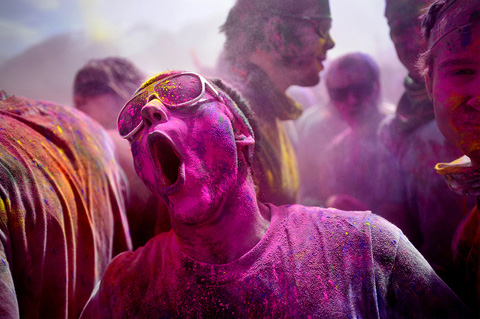
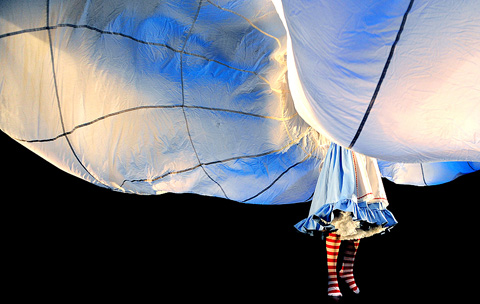
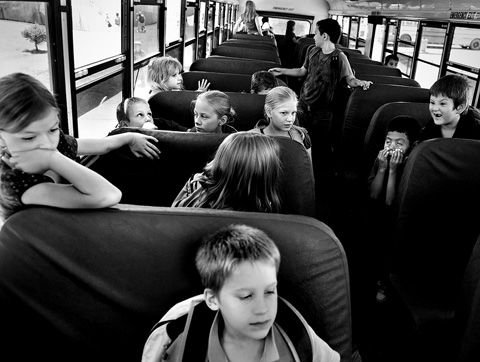
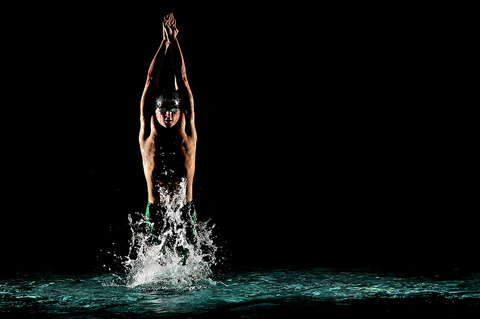
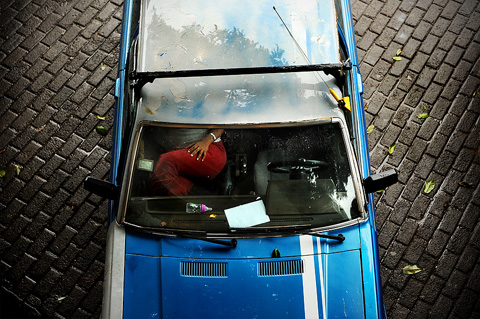
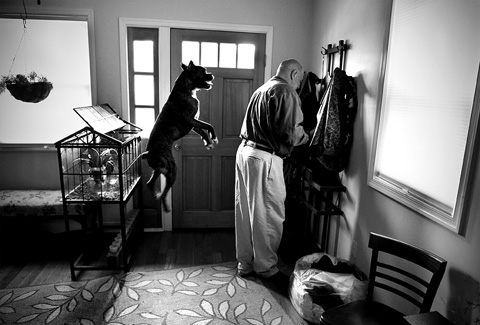
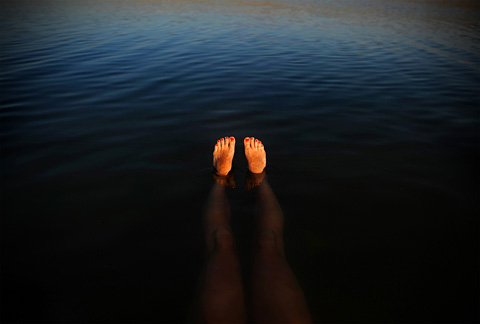
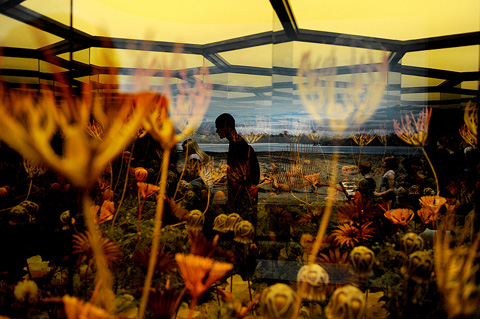
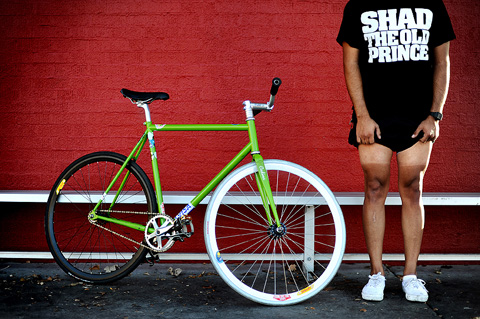
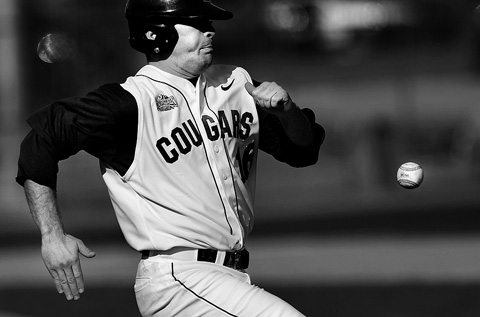
Patrick,
I like your thoughts on seeing without a camera. I feel like I am doing that all the time (maybe because I never have my camera :) ). Every where I go I’m looking for the shot. This makes me think I should always haveba camera (wonder if anyone else thinks that way?). Great post and video!
Ken
I remember reading somewhere that when you take your camera with you and you take landscapes, the best picture is always behind you. In London every year I see many tourists and photogs walking around with cameras almost glued to their faces and only experiencing a place through a small glass window. For me photography is trying to capture an experience, an instant. But it’s one instant out of the many millions possible. I think today in the digital age there’s (almost) a compulsion to capture, capture, capture and then edit and discard. Or worse store them and backup and backup and backup. I started out with film. And as a boy with only pocket money I could only afford to buy a roll of film sometimes, and as for those developing and printing costs . . . every frame was precious, and I spent a long time with a camera but not using it. To capture the world you need first to explore it, and lovely though they are, those little viewfinders can restrict your vision.
Good post Patrick
Patrick….great post…really enjoyed it. Love your website and blog….!!
Cheers,
Scotty
Jakarta, Indonesia
Hello Patrick,
I definitely agree to your thoughts of “see without your camera”.
It’s absolutely great taking pictures of the things we see around us on a day to day basis, but to see and experience something with our own eyes has a completely different dimension to it.
Your photographs displayed above are great. My favorite photograph would have to be (just out of humor) the one with the driver sleeping in his car.
Thank you for sharing your experiences.
Great column. Just looked at your website. Fantastic work! Very inspiring.
Thanks for the post, Patrick. Too many times I have heard or read, “Don’t leave your camera behind!” It was refreshing to hear something different and the reasons why. I often will look at a subject from different angles before putting the camera to my eye, but your way of shooting subjects takes that to another level.
BTW, I love the pictures of the dog in midair waiting to go for a walk (I presume) and the baseball player “racing” the baseball. Great captures, both!
–John
Nice post. I inform my students what the “Rules” are. Just as soon as I finish, I tell them that it is okay to break those rules depending on the situation. Your post enforces this view perfectly. What is the best whatever for this job, I am asked. My candid response is “It Depends” because what works today for this project may or may not work for another project tomorrow.
Thanks for a really good read… I too have a lathe that I haven’t turned on since I re-discovered my camera a few years ago. Maybe I’ll make a bowl or something this weekend, who knows.
Mike
You summed up the dilemma of a photojournalist very well. Sadly, I never thought to follow your line of thinking and ended up not getting shots I wish I had. But I still think I can apply this to our photography.
Patrick,
I started reading the post without reading who the guest author was, came down to the shot of the jumping dog and said, “HEY! That’s Patrick!” Great to see you getting some recognition. I’ve been following your blog since I was a staff member at Towson. Wishing you well.
Cheers,
Brad
Good word on leaving the camera behind. I used to take one with me wherever I went—even if it was just a local coffee house. Now, I typically leave my camera in my truck. If I happen to “see” a good photo, I’ll go get the camera and make the shot. Sometimes I miss out, but I got tired of being frustrated due to having my camera with me but not “seeing” or making images.
Loved your post and your website. Your photos are spectacular. I am inspired!
Patrick,
You are a great example of using your camera to the most, and getting the best as a photojournalist! An inspiration, even for a novice photographer like me….. And fascinating video, a true glimpse at life moments. Also, thanks for sharing some refreshing thoughts on taking that ‘second look’. I’ll remember that next time I hit the wall…..
Don
Great article Patrick. I agree with you about leaving your camera behind sometimes. There are times that I purposely leave my camera at home because I want to experience the place or event rather than feel like I am just trying to take photos.
Nice post Patrick. Enjoyed your website and blog as well, especially the rainy day shot on your blog.